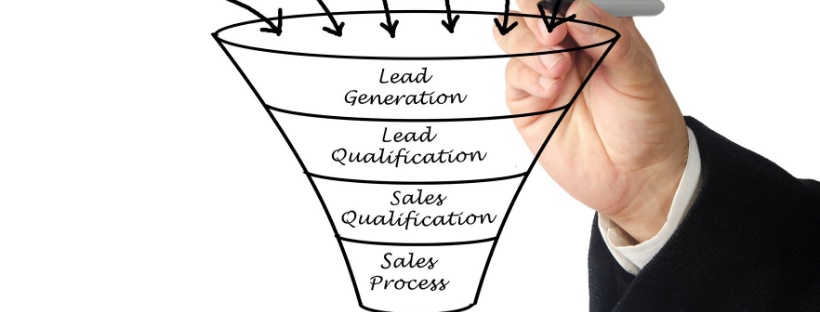A sales funnel is a visual representation of your customer’s journey from first contact to purchase. It’s an essential tool for marketers and business owners to understand how potential customers progress through the buying process. The funnel typically consists of four stages: awareness, interest, decision, and action. Each stage requires tailored strategies and content to guide prospects closer to a sale. By implementing a sales funnel, you can boost conversion rates, improve efficiency, and build stronger relationships with your audience. Understanding and optimizing your sales funnel can greatly impact your business’s success and growth. Dive deeper to discover its full potential.
Defining the Sales Funnel
The sales funnel boils down to a visual representation of a customer’s journey from initial awareness to final purchase. This funnel visualization helps you understand how potential customers move through various stages before deciding to buy your product or service. As a business owner or marketer, you’ll find this concept invaluable for improving your marketing strategies and boosting sales.
Imagine your sales process as an inverted pyramid, with a wide top narrowing down to a point at the bottom. At the top, you have a large pool of potential customers who are just becoming aware of your brand. As they progress through the funnel, some will drop off, while others move closer to making a purchase. This narrowing effect is why it’s called a funnel.
Stages of a Sales Funnel
Clarity in understanding the stages of a sales funnel is essential for optimizing your marketing efforts. As you navigate the customer journey, you’ll encounter distinct phases that guide potential buyers toward conversion. These stages typically include awareness, interest, decision, and action.
In the awareness stage, you’re introducing your brand to potential customers, piquing their curiosity. As they move into the interest phase, you’re nurturing their engagement, providing valuable information that resonates with their needs.
The decision stage is where you’ll see prospects seriously considering your offer, comparing it with alternatives. Finally, the action stage is where conversion rates come into play, as leads transform into paying customers.
Each stage requires tailored strategies to move prospects forward. By understanding these phases, you can create targeted content and experiences that address your audience’s specific needs at every step. This approach not only improves conversion rates but also fosters a sense of belonging among your potential customers, as they feel understood and valued throughout their journey with your brand.
Benefits of Implementing Sales Funnels
Implementing sales funnels offers five key benefits that can revolutionize your marketing approach.
First, you’ll see a significant boost in conversion rates as you guide potential customers through a tailored journey, addressing their needs at each stage.
Second, you’ll gain a deeper understanding of your customer journey, allowing you to refine your marketing strategies and create more targeted content.
Third, sales funnels help you build stronger relationships with your audience by providing value at every step, fostering trust and loyalty.
Fourth, you’ll experience improved efficiency in your sales process, as funnels automate many tasks and allow you to focus on high-quality leads.
Creating an Effective Sales Funnel
To create an effective sales funnel, you’ll need to follow a strategic approach that aligns with your business goals and target audience. Start by mapping out your customer journey, identifying key touchpoints where prospects interact with your brand. This will help you understand their needs and pain points at each stage of the funnel.
Next, focus on conversion optimization at every step. Craft compelling content that resonates with your audience, addressing their concerns and showcasing how your product or service can improve their lives. Use persuasive calls-to-action that guide visitors through the funnel, making it easy for them to take the next step.
Implement lead magnets and opt-in forms to capture contact information, allowing you to nurture relationships through personalized email marketing.
As prospects move deeper into the funnel, provide more detailed information and social proof to build trust and credibility.
Measuring Funnel Performance
Once you’ve established your sales funnel, it’s crucial to evaluate its effectiveness. Measuring your funnel’s performance will help you grasp how well it’s functioning and where you can make enhancements. To do this, you’ll need to track key metrics throughout the customer journey.
Start by analyzing your conversion rates at each stage of the funnel. This will show you where potential customers are dropping off and where they’re progressing.
You’ll want to pay close attention to the shifts between stages, as these are often where the most significant improvements can be implemented.
Don’t overlook the quality of leads moving through your funnel. It’s not just about quantity; you want to make sure you’re attracting the right type of customers who are likely to make a purchase and become devoted to your brand.
Frequently Asked Questions
How Long Does It Typically Take to See Results From a Sales Funnel?
You’ll typically see results from your sales funnel within 1-3 months. It depends on your conversion rates and how well you’ve optimized the customer journey. Stay patient and keep refining; you’re on the right path!
Can Sales Funnels Be Used Effectively for Both B2B and B2C Businesses?
Yes, you can effectively use sales funnels for both B2B and B2C businesses. When comparing effectiveness, consider your target audience differences. Tailor your approach to meet the unique needs of your customers, whether they’re businesses or consumers.
What Are Common Mistakes to Avoid When Implementing a Sales Funnel?
You’ll want to avoid neglecting your customer journey and ignoring conversion rates. Don’t overwhelm prospects with too much information or push for sales too early. Remember, we’re all in this together to create meaningful connections and drive success.
How Often Should a Sales Funnel Be Updated or Redesigned?
You should regularly maintain your sales funnel, but redesign it when it’s no longer effective. Evaluate performance monthly and consider a redesign annually or when market trends shift. Stay connected with your audience by keeping your funnel fresh and relevant.
Are There Any Industries Where Sales Funnels Are Not Recommended or Effective?
You’ll find that sales funnels are effective in most industries. However, they might not be ideal for certain service industry niches or the non-profit sector. In these cases, you’re better off focusing on relationship-building and community engagement.
Conclusion
You’ve now gained insight into sales funnels and their pivotal role in your marketing strategy. By understanding the stages, benefits, and creation process, you’re well-equipped to implement this powerful tool. Remember, an effective sales funnel guides potential customers through their journey, increasing conversions and boosting your bottom line. Don’t forget to regularly measure and optimize your funnel’s performance. With this knowledge, you’re ready to take your sales process to the next level.



